 Written by Hulet Smith, OT
Written by Hulet Smith, OT
If your child is experiencing sensory processing issues, they are not alone. Like ADHD, sensory processing disorder, or SPD affects 5 to 16 percent of children in the general population. It’s even more prevalent in specific populations. At least 75 percent of kids on the autism spectrum have significant symptoms of SPD, with some estimates as high as 95 percent. However, most children with sensory processing disorder do not have autism spectrum disorder. With the similarity of symptoms comparable to ASD, ADHD, and other disorders, it is important to get the proper diagnosis to ensure optimal treatment results. Read on to learn more about treatment plans for sensory seeking vs sensory avoiding and what may be the best Multi-Sensory approach to suit your child’s specific requirements.
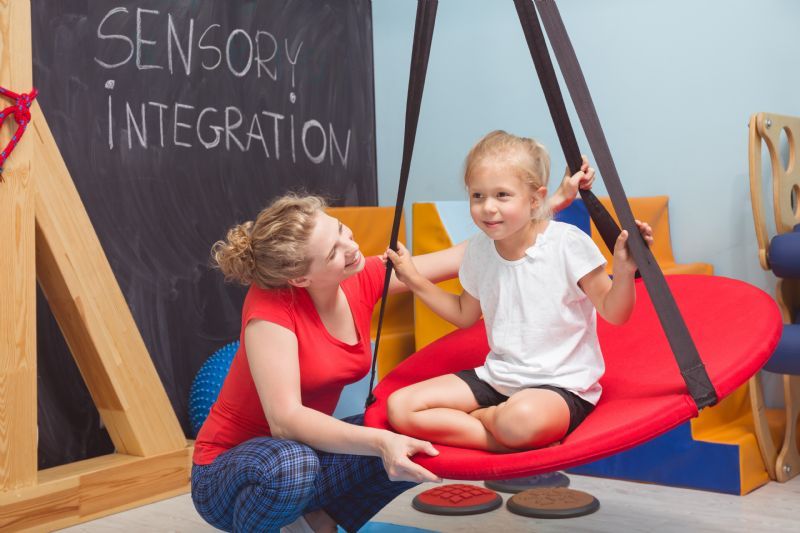
Children with sensory processing disorder typically experience problems with managing the information their senses receive. This can include challenges with the sight, touch, smell, sound, and taste senses, along with body awareness and balance, movement, and coordination. Some kids react too strongly to sensory input, known as hypersensitivity, while others under-react or seem unaware of the input they receive, or are hyposensitive. Many children display a combination of both sensory-seeking and sensory-avoiding behaviors as well. Exact symptoms can vary greatly from one child to the next and may be dependent on how familiar they are with their current environment combined with their level of sensory arousal.
Under-reactive sensory seekers tend to need more sensory input to function, while sensory avoiders overreact to sensory information, often becoming overwhelmed and hyperactive. Some common behaviors of sensory-seeking children include making loud noises, standing too close to other people, walking with louder and heavier footsteps, crashing into things, and playing too roughly. On the other hand, sensory avoiders tend to prefer solitude and quieter environments, avoid crowds, worry about being bumped into or unexpectedly touched, are easily startled or frightened by bright lights and loud noises, and don’t like swings, slides, and other playground equipment. Most children have a mix of both sensory seeking and sensory avoiding behaviors, with one or more dysfunctional senses involved.
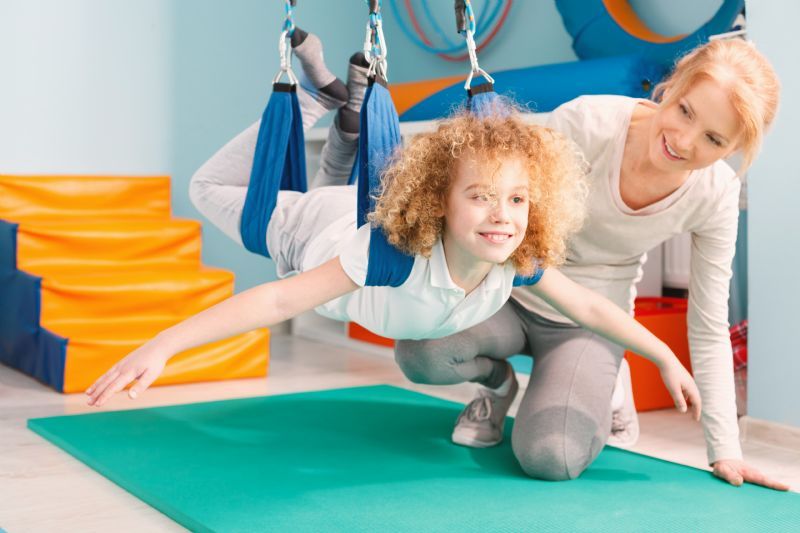
While some children are sensory seekers or sensory avoiders, many children with SPD demonstrate a combination of both behaviors. Responses can change depending on whether they are in a familiar, comfortable setting or a crowded, noisy, and unfamiliar place. Kids may have avoidant sensory meltdowns or seek more sensory input to calm themselves. Knowing your child’s specific triggers is vital not only for proper treatment and helping them learn to cope more effectively but also for improved management of their symptoms and the prevention of adverse sensory reactions.
Your child’s occupational therapist can help track progress or setbacks, tweaking the therapy to adjust to both negative and positive behavioral changes. The therapist may also prescribe a sensory diet: a personalized set of at-home activities that can be done daily. This helps to keep sensory integration therapy going between OT visits, supporting the development of more adaptive sensory responses. Keeping a journal of your child’s daily behaviors can also assist in determining patterns, triggers, and progress over a specific course of time.
Although both sensory processing disorder and autism spectrum disorder share similar characteristics, studies have found that SPD has unique sensory symptoms that are not explained by other known disorders. That said, the population of children with ASD usually have comorbidity with SPD, with estimates ranging as high as 90 percent. However, the majority of children with SPD do not have ASD. SPD's sensory-seeking and sensory-avoiding behaviors are also quite prevalent in children with disorders such as ADHD, OCD, misophonia, anxiety, and other neurological, developmental, and psychological conditions. Getting an accurate diagnosis as early as possible is important to determine the best treatment plan.
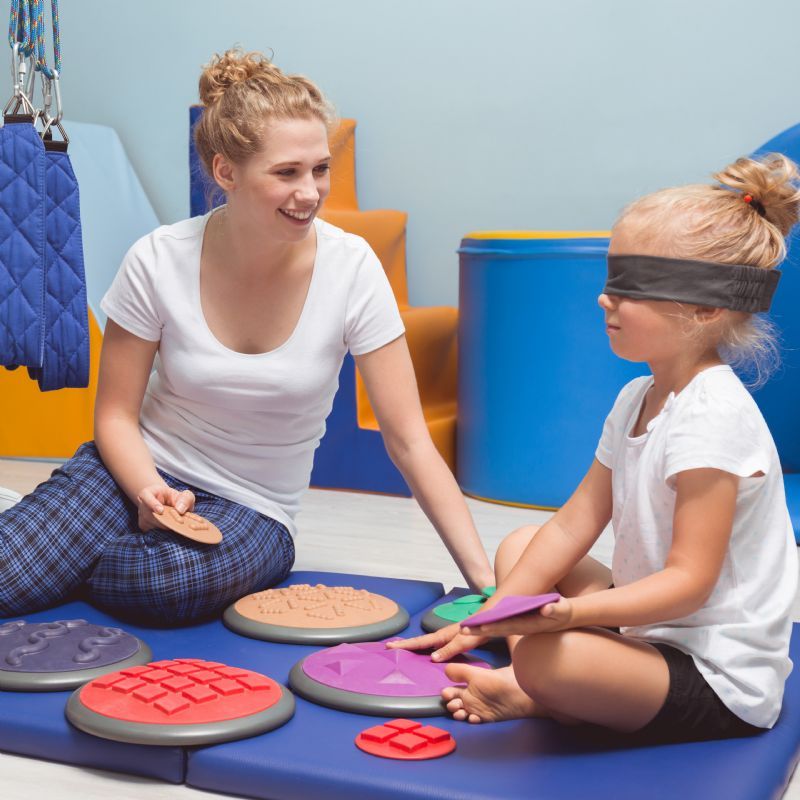
Children with sensory-seeking behaviors often have decreased awareness of their bodies in space and poor balance and coordination. Also called self-stimming or self-stimulation, they frequently seek out a great deal of sensory input, trying to attain more feedback from these systems. Occupational therapists can help young sensory seekers tame these hyperactive impulses by providing sensory-rich experiences to assist the child in participating and making sense of the world around them. Sometimes referred to as the OT gym or sensory gym, the child is guided through fun, but challenging activities to foster more appropriate responses to sensations, and respond more functionally.
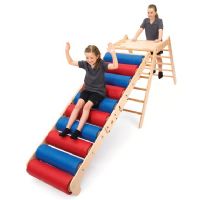 | Pediatric Steamroller Ramp Sensory Stimulation Therapy Slide View Product |
A personalized plan for a sensory-seeking child often includes trampolines, ball pits, deep pressure, and crash pads, along with activities like spinning, crashing, and jumping: all under the supervision and guidance of the therapist to suit each child’s unique needs, enabling them to explore safely. Many helpful items and activities used within the sensory gym can also be applied at home, such as weighted vests, blankets, and lap pads. Sensory toys that provide a good amount of varied feedback, supersized pillows for crashing, and any equipment that supports controlled movement, activity, and physical contact can help integrate the senses better and reduce sensory-seeking behaviors.
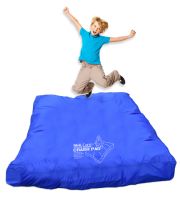 | Skil-Care Sensory Integration Crash Pads View Product |
Children with sensory-avoiding behaviors usually develop compensatory strategies to protect themselves from various forms of sensory information. Also best addressed by an occupational therapist who personalizes the treatment approach to suit each child, sensory integration therapy helps to gently desensitize children who are sensory avoiders. Determining which sense or senses are involved, OTs carefully determine the stimuli negatively affecting the child along with the relationships of the supporting sensory system.
 | Complete Bundle for Superactive Sensory Stimulation Room View Product |
Utilizing safe, controlled sensory stimulation, therapists can establish the individual strengths and challenges inherent within each pattern to customize the delivery of suitable therapy interventions for effective desensitization. Reinforcing positive behaviors, vestibular swings, skin brushing, and many other integration therapies can increase a child’s threshold for tolerating sensory-rich environments, making transitions less scary. Treatments to prevent melt-downs include soft, seamless, and untagged clothing, fidget toys, noise-canceling headphones, and sensory breaks in a dedicated chill-out space - all of which can be employed for therapy at home.
Although sensory processing disorder tends to be underdiagnosed and under-treated due to a lack of precise diagnostic criteria and tools to assess this disorder, promising new research could help improve the correct identification of SPD. Many children on the autism spectrum and those with attention deficit hyperactivity disorder often have sensory seeking and sensory avoiding issues, but the majority of children diagnosed with SPD do not have ASD or ADHD.
Significantly impacting a child’s ability to engage with the world, the sensory-seeking and sensory-avoiding behaviors associated with SPD require appropriate support. Recognizing the signs and unique sensory needs of your child, along with obtaining the correct diagnosis is vital in helping them thrive. Knowing their sensory triggers, exploring therapy options, and making environmental adjustments can provide your child with the specific tools and resources they require to navigate the world more comfortably.
Thanks for taking the time to learn more about how finding the right treatment plan can benefit your child with sensory seeking, sensory avoiding, or both conditions. We invite you to check out our Multi-Sensory tools that can help support your child, along with an ever-growing collection of helpful articles covering a variety of health-related topics at Caregiver University.

Co-founder/CEO of Rehabmart, Pediatric Occupational Therapist, husband, and father. Passionate about connecting special needs kids with superb nutrition, sensory integration, and complementary health strategies. Excited about Rehabmart's mission to become the premier online educational platform which empowers caregivers by spotlighting innovative devices and interventions to achieve optimal patient response and recovery.